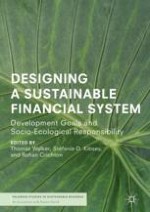2018 | OriginalPaper | Buchkapitel
4. Seeking Greener Pastures: Exploring the Impact for Investors of ESG Integration in the Infrastructure Asset Class
verfasst von : Roy R. Sengupta, Tessa Hebb, Hakan Mustafa
Erschienen in: Designing a Sustainable Financial System
Aktivieren Sie unsere intelligente Suche, um passende Fachinhalte oder Patente zu finden.
Wählen Sie Textabschnitte aus um mit Künstlicher Intelligenz passenden Patente zu finden. powered by
Markieren Sie Textabschnitte, um KI-gestützt weitere passende Inhalte zu finden. powered by
